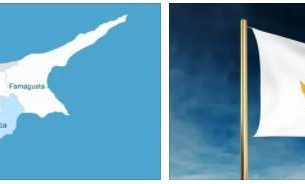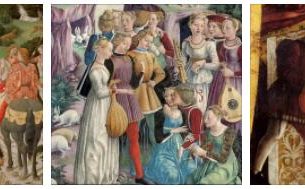CULTURE: GENERAL INFORMATION
The ancient Netherlands, a geographical area including Flanders (now included in Belgium) and part of northern France, enjoyed considerable economic and cultural prosperity in the fourteenth and fifteenth centuries, thanks to an extremely geographical position. favorable, at the confluence of three major European rivers, the Rhine, the Meuse and the Scheldt. Subsequently, following the Eighty Years War (1568-1648), the cultural-economic center of gravity moved towards the north, in the Republic of the united provinces (the future kingdom of Holland), which became independent towards the end of the 16th century. It was precisely from this period, with the great commercial and maritime affirmation of the Netherlands, that the cultural identity of the nation was shaped. The continuous explorations of its navigators, the predominant role in business and commerce contributed to giving the culture of the country a cosmopolitan vocation open to foreign cultural stimuli that continues today. The arts, in all their forms, have always known great expression in the Netherlands, a nation that can boast some of the most famous artists in the world (from Rembrandt to Frans Hals, from Vermeer to Van Gogh and Mondrian). Among the sites considered a World Heritage Site by UNESCO, the Netherlands include the Schokland peninsula, submerged by water in 1859 and recovered thanks to the drainage of the Zuiderzee, the mills of Kinderdijk-Elshout, the defensive line of Amsterdam, a complex system of dams, locks and canals which, built between 1883 and 1920, surrounds the capital, the polder, for 135 kmBeemster, dating from the early 17th century, the DF Wouda steam pumping station in Lemmer, Friesland and the Schröder house in Utrecht, one of the most representative buildings of neoplastic architecture, designed in 1924 by Gerrit Thomas Rietvel, the Van Nelle factory in Rotterdam, the canals of Amsterdam built between the end of the 16th and the beginning of the 17th century and the Wadden Sea. The numerous museums deserve a separate mention, adequately supported by the State and testimony of various aspects of the country’s cultural heritage, from contemporary art to permanent exhibitions dedicated to the great masters of painting, but there are also museums dedicated to natural history, history, to ethnology and the major discoveries of technology. The main museums are the Rijksmuseum (or Royal Museum) and the Vincent Van Gogh Museum in Amsterdam, the Museum Boijmans Van Beuningen in Rotterdam, the Mauritshuis in The Hague, and the Het Loo Palace in Apeldoorn. Prestigious collections of modern and contemporary art are often exhibited at the Stedelijk Museum in Amsterdam, the Kröller-Müller Museum in Otterlo, the Bonnefanten Museum in Maastricht and the Van Abbemuseum in Eindhoven. Official language is Dutch (dialect Dutch) which belongs, like English and German, to the branch of West Germanic languages; in Friesland discussed the Frisian. Regarding the science and research sector, the government’s objectives are to ensure high quality standards and the conditions for further scientific progress. Research institutions, usually part of universities, receive grants from the government but can apply for funding from funds managed by the Royal Academy of Arts and Sciences of the Kingdom of the Netherlands (KNAW) and the Dutch Agency for scientific research (NWO). These institutions can also raise funds by offering courses or by conducting contract-based research for companies. The Netherlands is a leader in research in the fields of hydraulic engineering, chemistry and information technology.
CULTURE: ART: FROM THE 13TH TO THE 15TH CENTURY
According to globalsciencellc, among the oldest monuments in the region are the remains of the polygonal church of St. Valburga in Groningen (c.1000) and some pre-Romanesque churches in Utrecht (St. Peter, St. John; mid-11th century) and Maastricht (the Westwerk of Our Lady, ca. 1000; S. Servatius). The Dutch Romanesque style of the sec. XII and XIII does not differ from the German Rhenish one (large stone churches with ribbed vaults: Our Lady of Maastricht, 1170; Roermond Cathedral, ca. 1219). In the sec. XIII the prevailing late Romanesque style was mixed with Gothic elements (Utrecht cathedral, rebuilt starting from 1254), but the great flowering of the Gothic style with regional characteristics took place in the following centuries, from the fourteenth to the sixteenth. In Brabant, Holland and Zeeland this was established in the forms of “Brabantine Gothic” (cathedral of ‘s-Hertogenbosch; collegiate church of Our Lady of Breda; church of Tolen; St. Catherine of Utrecht; St. Lawrence of Alkmaar; Grote Kerk (large church) in Haarlem; Grote Kerk in the Hague; Our Lady of Dordrecht; etc.), while in the Groningen area there are terracotta churches with domed vaults (Appingedam, Garmerwolde, Groningen etc.) and in the area between the Rhine and Meuse buildings of the Rhenish late Gothic type (Nijmegen, Venraai, Arnhem). As far as sculpture and painting are concerned, all the major Dutch artists of the fourteenth and fifteenth centuries worked in France, Claus Sluter, the Limbourgs, J. Malouel, Petrus Christus, D. Bouts, G. David etc.). Only the paintings of Albert van Ouwater, Geertgen tot Sint Jans and the other Haarlem masters show more properly “Dutch” characters.



